12 best practices for lead nurturing with marketing automation
Lead generation is one of the biggest line items on many budgets, with initiatives spanning sales, marketing, and customer service teams. Lead nurturing refers to how you communicate to leads once they are generated, in an effort to convert them to customers. Nurturing ensures that all that money and effort invested in generation isn’t being wasted. It lets you further hone in on the most qualified leads, but also ensure that those qualified leads make it to the end of the buyer’s journey and are converted into customers.
Marketing automation (MA) is one of the (if not the) core components of any successful lead nurturing program. A powerful MA solution provides loads of online lead generation tools to help qualify and convert more leads, faster.
The Annuitas Group reports that businesses using marketing automation to nurture prospects experience a 451% increase in qualified leads. They also report that 47% of nurtured leads make larger purchases than non-nurtured leads.
Lead nurturing is essential to increasing revenue and overall business growth. But how do you excel at lead nurturing and help drive that growth? Here are 12 lead nurturing best practices that will help you beat the competition.
Use lead scoring to qualify
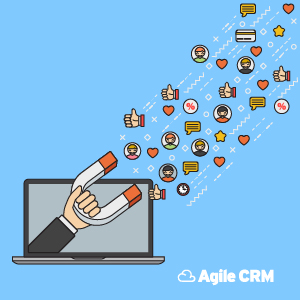
Lead scoring—provided by most robust MA solutions—allows marketers to accurately gauge when nurtured leads are qualified and ready to be passed over to sales for outreach. It is possible to award points to leads for a whole host of actions, including:
- Opening and clicking a nurturing email
- Visiting high-value web pages
- Completing forms on landing pages
- Registering and attending events, such as webinars
- Requesting product demos
It’s important to have a score threshold at which a lead is considered to be marketing qualified. As a marketer, you should confer with sales to decide which actions warrant which score, and at which score a lead is considered to be marketing qualified.
You should revisit the scoring mechanism at least once a quarter by meeting with sales to gain consensus on whether leads are being qualified too early or too late. In this way, you can continually hone in on the perfect recipe for lead qualification.
Make data-driven decisions

Using metrics and analysis to make informed decisions is a best practice across most industries. Marketing is no exception. A robust marketing automation solution will provide deep insight into the results of your lead nurturing program, allowing you to continually focus more on what’s working and less on what’s not.
Lead nurturing is as much a science as it is an art form. You can get highly creative with your campaigns and the content assets you employ in them. But, you should always be sure that as you move forward, the decisions you make are based on actionable data from your marketing automation system.
According to Forrester Research, 91% of marketers say a tool that enables their teams to review, analyze, and act upon customer and marketing data in a continuous and real-time fashion would be valuable for their organization. Be sure your lead nurturing strategy revolves around data-driven decision making.
Hit multiple channels
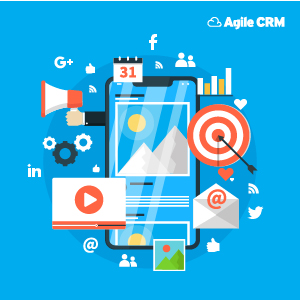
These days, it’s not enough to just put your message out there. You have to nurture your leads on the communication channel they look to for information. The channels vary according to demographics and industry, and you want to be able to cover every channel that is relevant to your business.
Your leads are on social media, email, their mobile devices, etc. Marketing automation allows you to connect with leads where they spend the most time, as well as identify where those places (channels) might be. Forrester also reports that companies that excel at lead nurturing generate 50% more sales-ready leads at 33% lower cost. This makes a strong case for leveraging marketing automation for lead nurturing to ensure you are reaching leads across all the channels they frequent. It’s one of many reasons to use marketing automation.
Set an acceptable cadence
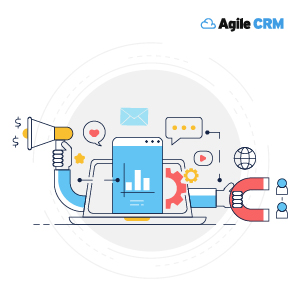
Most of your lead nurturing efforts will come in the form of direct outreach via email and multichannel marketing campaigns. You will weave together a narrative that tells a story over time in order to nurture leads through the buyer journey toward conversion.
It is critical that you don’t inundate your leads with constant outreach. Doing so risks annoying them and losing their attention. If you send an email every other day, they are likely to unsubscribe, and you’ll have lost a lead in your nurturing program.
It’s important to set a cadence for outreach that keeps leads engaged, but not overwhelmed by your message. You want your message and brand to stay front of mind without shouting at them. Setting the right cadence helps achieve this and keeps nurtured leads engaged through to conversion.
Seamless alignment between marketing and sales
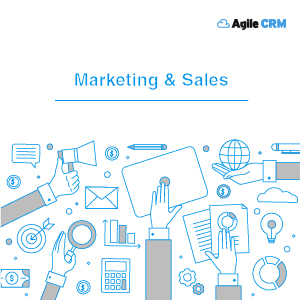
What good is a nurtured lead if they become qualified and then die on the vine. Your sales team has to reach out while the lead is ripe for a conversation. Tight alignment between marketing and sales—via marketing automation software—helps prevent this in a few ways:
- Lead scoring helps define the most sales-ready leads
- Once a lead is qualified, a task is automatically sent to sales for follow up
- With an all-in-one platform like Agile CRM, the sales rep has a view into every marketing touch point that led the lead to qualification
- Armed with loads of insight into how a lead was nurtured, reps can prepare for a highly personalized conversation that speaks directly to that lead’s interests
Leverage killer inbound content
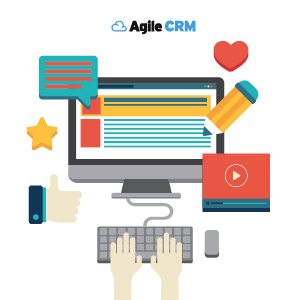
When you first start to nurture leads, you don’t want to overtly sell to them. You want to slowly build their trust in you as a leader in your industry. The best way to do this is by creating killer inbound content and using it in your nurturing campaigns.
Inbound content includes blogs, infographics, social media, and any other content type that is produced to solve common problems for your leads. This is not content that speaks directly about your brand (or if so, in a passive way).
If you can solve a particular problem for a lead through inbound content, you’ll have their attention, and they’ll look to you in the future to solve similar problems. Indeed, content marketing is a growing trend in 2018.
Personalization, personalization, personalization!

Personalization refers to the use of lead data to customize the messages and content you deliver to them. You can include their name, industry, location, past purchases, or any other data you have stored on them in your CRM or MA solution. This produces highly targeted messaging. According to DemandGen, using personalized content to nurture leads results in a 20% higher conversion rate than using a one-size-fits-all approach.
Personalization is becoming the norm, especially with email marketing. It’s one of various hot topic email marketing trends in 2018. You can expect to see this trend continue to grow as it becomes the expectation of consumers. That’s why now is the best time to start incorporating personalization into your lead nurturing process.
Get hyper with segmentation

In line with the concept of personalization is the best practice of tailoring lead nurturing content to extremely targeted email segments.
Marketing automation tools and CRM systems are designed to front-load your nurturing campaigns with all the insight available about a lead. So instead of email blasts to a group of people with little more than job titles in common, why not use what you know and create highly targeted email nurturing lists?
For example, instead of sending the same email to nurture leads with the job title of sales manager, send customized emails to sales managers in the building and construction industry in the southeast who have been seeking ways to streamline their deal tracking. You can even further segment by demographics and behaviors that occur outside of work hours.
The more information you draw from all the data streams available, the more accurate your segments can be. This way you know you’re reaching out to leads with content that speaks to their unique needs, at the right point during their consideration process
Monitor the customer journey
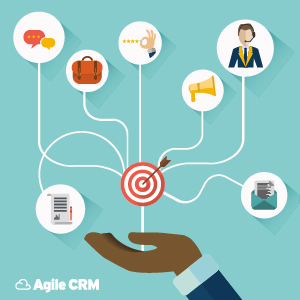
What makes a lead a lead instead of any old consumer is the fact that they have already begun their customer journey. They have demonstrated a need for or interest in your particular product or service, and now it’s time to make them choose you over the competition.
The way you do that is to be right by their side as you nurture them through that journey. Through their actions, they’ll let you know what they’re thinking, and you can identify these behaviors as signals for when and how to engage them.
Within the context of automation, these actions are called trigger events. They let your system know that the lead is primed for the right message to move them to the next stage of the funnel.
According to Epsilon, triggered email messages deliver 68% higher open rates and 241% higher click rates than standard email messages. This strategy for automated lead nurturing will have a significant impact on how many leads you can nurture through to qualification.
Smart use of images and videos
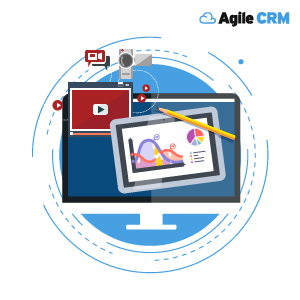
Images and videos can be a great way to serve your leads compelling content that catches their attention as they move through the funnel.
It also can lead to higher brand recognition throughout the consideration process. Studies show that when someone hears a piece of information, in three days they will remember about 10% of what they heard. However, they will retain 65% of it after three days when that information is paired with a relevant image.
It’s critical to your lead nurturing efforts that your visual content is relevant to your message. Eye-tracking studies have shown that readers spend more time looking through images than reading text when they are relevant to the copy. Be sure to make them punchy but keep them aligned with the purpose of your lead nurturing campaign. Now is not the time for generic stock photos.
The human element is key here as well. A study by VWO showed that photos of humans saw 95% higher conversion rates than photos of objects. For lead nurturing, images and videos of people allow your leads to imagine themselves using and benefiting from your solution.
A simple and clear call to action
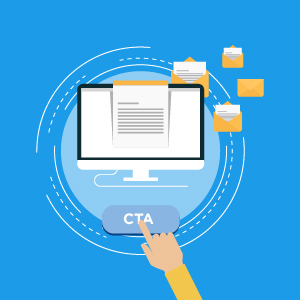
As we’ve noted before, a good call to action (CTA) can be the difference between converting a new lead and losing them. And when it comes to lead nurturing, what good is a super compelling message if you prepare your lead to take the next step but they don’t know how to do it?
Your CTA should be clearly visible in the design of the email or landing page, and it should also speak directly to the next step in that lead’s journey. A simple “Get started” button is great for broad marketing messages, but to nurture a lead, you need to speak to that individual and where they are in the funnel.
Does the content give them an offer code? If so, your CTA should say something like “Redeem my code” or “Save me money.”
Does the content invite the lead to learn more about your specific offering? If so, your CTA should address that with a message like “Start my demo” or “Get my free trial.”
The CTA is about letting your lead know exactly how to take the next step with you and what that step entails.
Re-target and re-engage

Finally, with lead nurturing, timing is everything. For whatever reason, you may have just missed a potential buyer during their “most-likely-to-purchase” window, but that doesn’t mean they’re an unqualified lead. It means you get another chance to convert them.
Ultimately that lead will continue to make their way through the funnel. Assuming they haven’t already chosen your competitor, you will see additional opportunities to engage with them once their purchase window opens again.
Think of the buyer’s journey as a flexible one that lets your targets jump back a few steps if they need to learn more and reevaluate. Don’t waste the relationship building you have already done by letting leads die on the vine.
The bottom line
These are just some of our recommendations for successful lead nurturing. As with everything, testing is always key. Patterns of engagement and conversion will let you know what’s working and what isn’t. Every customer base comprises different people who need unique methods of communication. A/B testing is a great way to hone in on what’s working most effectively for your audience.
Incorporate a feedback loop to act on lessons learned, and never stop learning. A lead may convert to a customer, but you should always be nurturing them to not only maintain but grow the relationship because you never know what opportunities might lie ahead.
No Comments